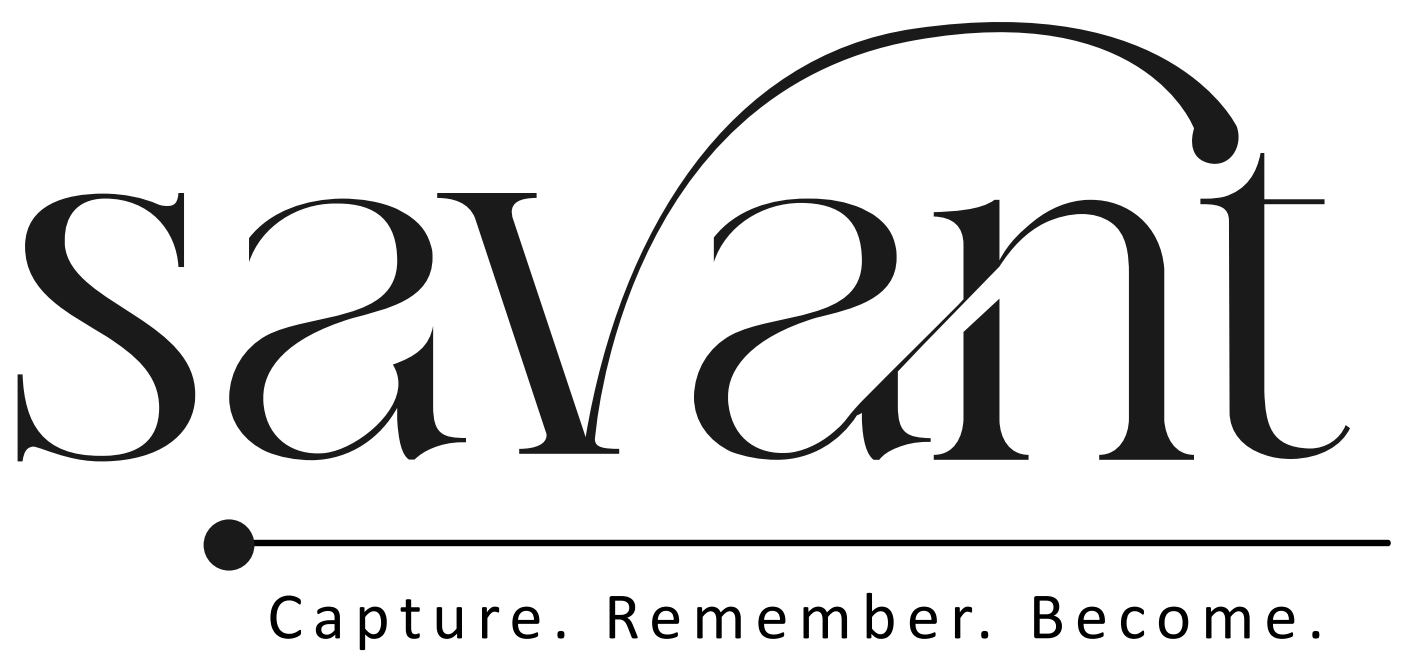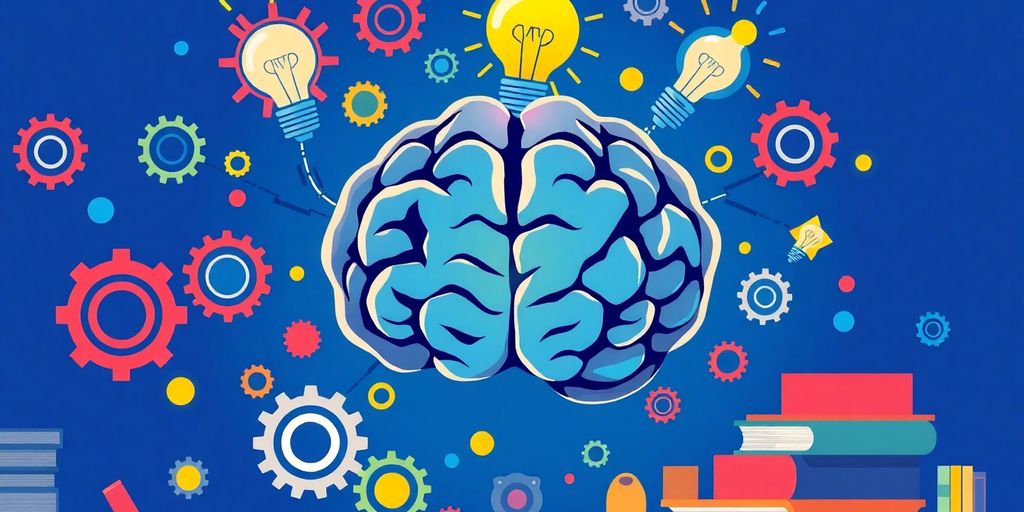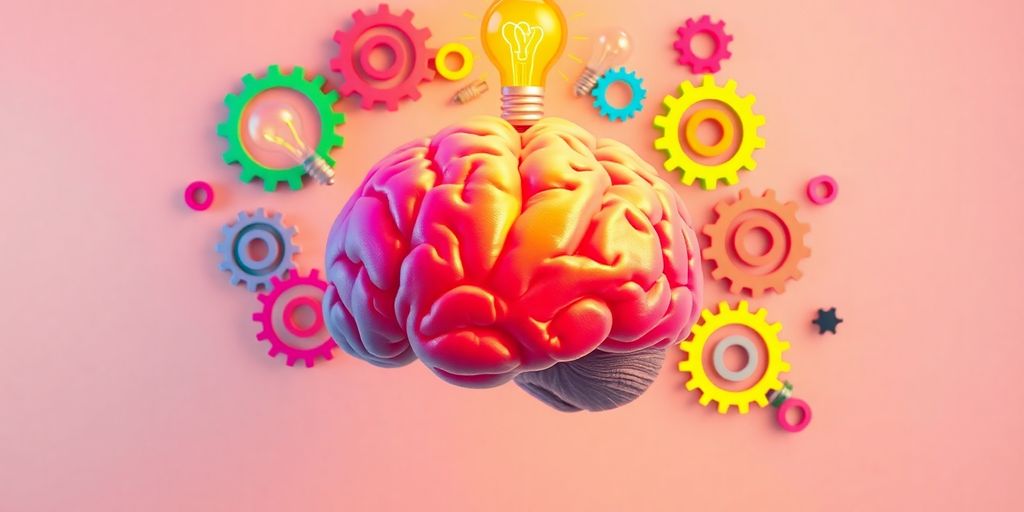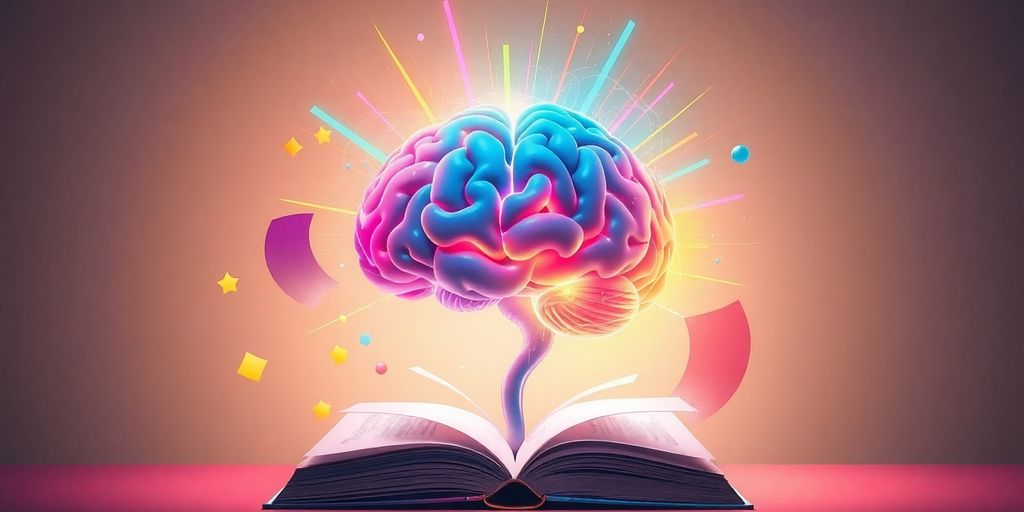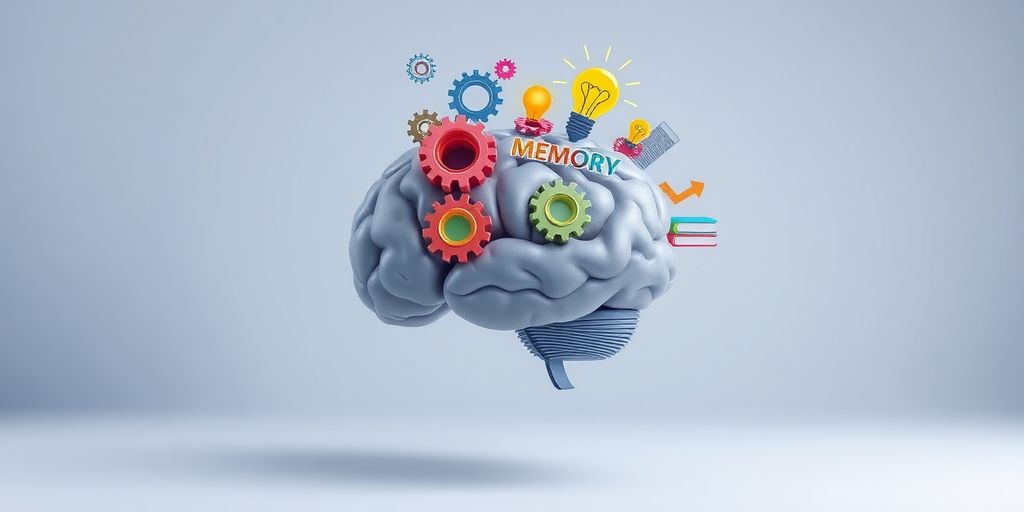Ever feel like your study habits just aren’t cutting it? Enter the Memory Palace technique—a game-changer for anyone looking to boost their learning. This method isn’t just about cramming facts; it’s about creating a visual journey through familiar spaces in your mind. By linking what you need to remember with places you know well, studying becomes less of a chore and more of an adventure. Let’s dive into how you can build your own Memory Palace and why it might just change the way you learn forever.
Key Takeaways
- The Memory Palace technique uses familiar locations to help you remember information more effectively.
- Creating vivid images in your Memory Palace can make the information stick better.
- Regular practice with your Memory Palace enhances memory retention.
- This method can be applied to various subjects, including languages, sciences, and history.
- Avoid overloading your Memory Palace with too much information at once to prevent confusion.
Understanding the Memory Palace Technique

What is a Memory Palace?
Imagine walking through your childhood home and associating each room with a piece of information you need to remember. That’s the essence of a memory palace. It’s a method where you link what you want to recall with familiar places. You’re basically turning your home, or any location, into a giant mental cheat sheet. It’s like having a mental map where each point holds a memory. Sounds fun, right?
The History of Memory Palaces
The memory palace technique isn’t some new-age gimmick. It’s been around since the days of ancient Greece and Rome. Back then, orators would use this technique to remember long speeches. They’d visualize walking through a palace, with each room holding a part of their speech. It was their way of keeping track of complex ideas without notes or paper. This ancient trick has stood the test of time, proving its worth over centuries.
Why Memory Palaces Work
So, why does this method work so well? It taps into our brain’s natural ability to remember spatial information. Think about it: you might forget a friend’s phone number, but you can easily recall the layout of your favorite coffee shop. Memory palaces use this spatial memory to help you remember other types of information by linking them to specific locations. Plus, it’s a lot more engaging than rote memorization. You’re not just memorizing; you’re exploring a world of your own making. That’s the real magic of memory palaces.
Embrace the power of the memory palace, and let it lead you to realizing your full potential. You’re not just improving your memory; you’re transforming how you think and learn.
Building Your First Memory Palace
Choosing the Right Location
Alright, first things first, you need a place. Think about somewhere you know like the back of your hand—your home, maybe? It should be a spot where you can mentally walk through without getting lost. Pick a location that’s familiar and straightforward. This could be your living room, a friend’s house, or even your school. The more you know it, the easier it is to visualize. Avoid overly complex places at the beginning; simplicity is key.
- Select a familiar place: Start with something you know well to keep things simple.
- Map out your journey: Visualize how you’d move through this space. This helps create a clear mental path.
- Keep it simple: Avoid complicated areas initially to prevent confusion.
Creating Vivid Imagery
Now, this is where the fun begins. Use your imagination to fill your chosen space with colorful, crazy, and memorable images. Picture a giant banana on your couch or a dancing penguin in the hallway. The sillier, the better! These images need to stick, so go wild. Engage all your senses—think about what these images look, smell, and sound like.
- Make it colorful: Bright, bold images stand out.
- Be outrageous: The more bizarre, the easier to remember.
- Use all senses: Imagine sounds, smells, and even textures.
Linking Information Effectively
Here’s where you tie it all together. You’re going to associate the information you want to remember with the images you’ve created in your memory palace. Each station in your palace should hold a piece of information. For example, if you’re trying to remember a speech, each part of your talk could be linked to a different spot.
By creating strong links between your vivid images and the information, you make it easier to recall later. This method transforms abstract data into something tangible and memorable.
When you’re setting up your mind palace, start by establishing unique locations within your designated space, referred to as loci. This technique aids in memory retention by associating information with specific, familiar places.
Maximizing Your Study Sessions with Memory Palaces
Incorporating Sensory Details
When you’re using a Memory Palace, don’t just stick to visual cues. Get all your senses involved. Imagine the smell of fresh bread in your kitchen or the sound of birds chirping in your backyard. This makes the learning experience more immersive and helps the information stick. It’s like turning your study session into a full-on sensory adventure.
Practicing Regularly
Consistency is key. Set aside a little time every day to walk through your Memory Palace. It doesn’t have to be long—just a few minutes can make a big difference. By making it a habit, you’ll find that recalling information becomes second nature. Plus, regular practice keeps you motivated and less likely to forget what you’ve learned.
Avoiding Common Pitfalls
While Memory Palaces are awesome, there are a few traps to watch out for:
- Overloading Your Palace: Trying to cram too much info into one Palace can backfire. Focus on a few key points and expand as needed.
- Inconsistency: Skipping days can break the flow. Make it a daily ritual, even if it’s brief.
- Ignoring Your Learning Style: Everyone learns differently. Adapt your Palace to fit your personal style, whether that’s visual, auditory, or kinesthetic.
"Starting your Memory Palace journey can feel overwhelming, but taking it step by step will lead to success. Just remember to enjoy the process!"
By avoiding these pitfalls, you can make your study sessions more effective and enjoyable. And if you’re looking to boost your memory even further, consider employing spaced repetition alongside your Memory Palace practice. This combination can take your learning to the next level.
Applying Memory Palaces to Different Subjects
Language Learning with Memory Palaces
When it comes to learning a new language, a memory palace can be your secret weapon. Imagine placing each new word in a specific room of your house. For instance, you could visualize your kitchen filled with food items labeled in the new language. This not only helps with memorization but makes it fun, too! Another trick is to create stories around the words you learn. This narrative approach makes the vocabulary stick in your mind. And don’t forget to practice speaking! Walk through your memory palace and rehearse conversations out loud.
Mastering STEM Subjects
STEM subjects can be tricky, but a memory palace can simplify them. Break down complex formulas by assigning each part to a different location in your palace. This visualization helps you recall them more easily. Use diagrams, too. Picture a lab in your palace where experiments unfold, linking concepts and making them memorable. By placing related topics in nearby rooms, you can see how they connect, which is super helpful during exams.
Remembering Historical Events
History is full of dates and events, and a memory palace can make them easier to remember. Assign dates to significant places in your life. For example, your school might represent a major historical event. Create vivid images of these events happening in your palace. Imagine a battle scene in your backyard to recall a historical conflict. Weaving a story that connects these events and dates will make them more memorable.
Memory palaces aren’t just for memorizing; they can turn studying into an exciting adventure! By visualizing and connecting information, you can unlock your full learning potential.
Consider using the method of loci to enhance your memory by visualizing specific locations to organize and recall information more effectively.
Advanced Memory Palace Techniques

Creating a Network of Memory Palaces
Once you’ve got the hang of a single memory palace, it’s time to level up. Think of it like expanding your real estate—you’re not just limited to one house. You can create a whole neighborhood of memory palaces! Each palace can be dedicated to different subjects or types of information. This approach not only increases your memory capacity but also keeps your mental storage organized. Imagine having one palace for languages, another for historical facts, and yet another for everyday tasks. The possibilities are endless.
Using Emotional Triggers
Emotions are powerful memory enhancers. When you tie information to a strong emotion, it sticks better. For example, if you’re trying to remember a boring list of dates, link each date to an emotional event from your life. Maybe a date reminds you of a birthday party or a family vacation. The emotional connection can make the information pop in your mind. Emotions add color to the otherwise black-and-white data.
Adapting for Professional Use
In the workplace, having a sharp memory can give you a real edge. Memory palaces aren’t just for students cramming for exams—they’re a powerful tool for professionals too. Whether you’re preparing for a big presentation or need to remember key points for a meeting, a memory palace can help. By creating vivid, memorable images of your talking points, you can walk into any professional setting confident and prepared. It’s like having a mental cheat sheet that no one else can see.
Building a network of memory palaces can transform how you store and recall information. It’s not just about memorizing—it’s about creating a mental map that makes learning an adventure. Once you start using emotional triggers and adapting these techniques for your career, you’ll find that memory palaces are more than just a study tool; they’re a lifelong skill.
Tracking Progress and Staying Motivated
Setting Achievable Goals
Setting goals that are realistic and within reach is key to keeping yourself motivated. Start by defining what you want to achieve with your memory palace. Is it to memorize a list of historical dates, or perhaps vocabulary for a new language? Break these larger goals into smaller, manageable tasks. Small victories can boost your confidence and keep you on track.
Reflecting on Your Learning Journey
Reflection is a powerful tool in any learning process. At the end of each week, take some time to think about what worked well and what didn’t. Did you find a particular imagery technique more effective? Were there distractions that hindered your progress? Keeping a journal can help you identify patterns and adjust your strategies. This process not only helps in tracking your progress but also provides insights into your learning style.
Celebrating Small Wins
Don’t wait until you’ve achieved your final goal to celebrate. Every small milestone is a step in the right direction. Whether it’s recalling all the items on your grocery list without a hitch or successfully remembering a complex formula, take a moment to acknowledge your achievement. It’s these small wins that keep you motivated and eager to tackle the next challenge.
Remember, the journey to mastering your memory palace is a marathon, not a sprint. Celebrate each step forward, no matter how small.
By 2025, learning and memory trends are expected to evolve, offering more innovative ways to enhance our learning experiences. Embrace these changes and continue to adapt your memory palace techniques to stay motivated and on track.
Incorporating Memory Palaces into Daily Life
Using Memory Palaces for Everyday Tasks
Memory palaces aren’t just for acing exams or learning languages; they can be a handy tool for everyday tasks too. Imagine walking through your home and using each room to remember your grocery list or daily to-dos. This technique transforms mundane chores into an engaging mental exercise. Start with something simple, like remembering to buy milk by picturing a giant milk carton in your living room.
Enhancing Creativity and Imagination
Using a memory palace can also spark your creative side. By visualizing vivid and unusual images in familiar places, you open up your mind to new ideas. Think of it as a mental playground where your imagination can run wild. For instance, if you’re brainstorming for a project, place different ideas in each "room" of your palace and see how they connect.
Making Learning Fun Again
Learning doesn’t have to be a chore. With memory palaces, you can turn study sessions into a fun adventure. Picture this: you’re walking through a castle, and each room holds a different piece of information you need to remember. This method not only makes the process enjoyable but also helps the information stick better. It’s like turning your brain into a super-powered memory machine.
Using memory palaces daily can improve not just your memory but your overall cognitive skills. It’s a simple yet powerful way to keep your mind sharp and engaged. Imagine a future where memory techniques and AI blend seamlessly to support lifelong learning, making it an integral part of everyday life. Explore how memory technology and AI are shaping future learning environments.
Wrapping It Up: Your Path to Learning Success
So, there you have it! The Memory Palace technique isn’t just some fancy trick—it’s a whole new way to think about learning. By turning your study sessions into a fun and creative process, you can remember things better and actually enjoy the ride. Whether you’re tackling a new language, diving into history, or just trying to keep track of your grocery list, this method can make a real difference. Give it a shot, and who knows? You might just find yourself looking forward to studying. So go ahead, build your palace, and see where it takes you. Happy learning!
Frequently Asked Questions
What exactly is a Memory Palace?
A Memory Palace is a mental technique where you imagine a familiar place and associate different pieces of information with specific spots in that place to help you remember them.
Can anyone learn to use a Memory Palace?
Yes, anyone can learn to use a Memory Palace. It’s a fun and creative method that can help improve memory, regardless of age or learning style.
What kinds of things can I remember using a Memory Palace?
You can remember almost anything using a Memory Palace, from vocabulary words and historical dates to complex formulas and everyday tasks like grocery lists.
How do I start building my first Memory Palace?
To build your first Memory Palace, choose a place you know well, like your home. Then, imagine placing the information you want to remember in different rooms or spots in that place.
Why do Memory Palaces work so well?
Memory Palaces work well because they use visual images and familiar locations, which our brains are naturally good at remembering. This makes it easier to recall the information later.
What should I do if I forget parts of my Memory Palace?
If you forget parts of your Memory Palace, revisit it often and make the images more vivid and unusual. Regular practice helps strengthen the memory connections.
